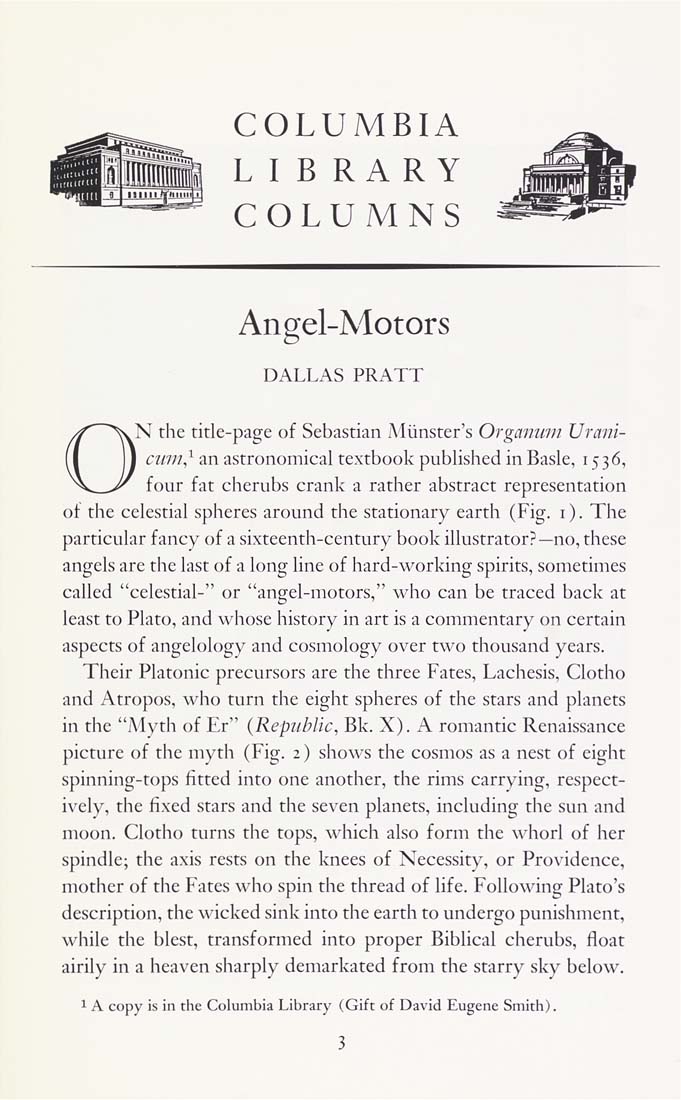Columbia Library columns (v.21(1971Nov-1972May))
(New York : Friends of the Columbia Libraries. )
|
||
|
|
|
|
| v.21,no.3(1972:May): Page 3 |

COLUMBIA
LIBRARY
COLUMNS
Angel-Motors
DALLAS PRATT
. N the title-page of Sebastian Miinster's Organum Urani-
cunt,^ an astronomical textbook published in Basle, 1536,
four fat cherubs crank a rather abstract representation
of the celestial spheres around the stationary earth (Fig. i). The
particular fancy of a sixteenth-century book illustrator? —no, these
angels are the last of a long line of hard-working spirits, sometimes
called "celestial-" or "angel-motors," who can be traced back at
least to Plato, and whose history in art is a commentary on certain
aspects of angelology and cosmology over two thousand years.
Their Platonic precursors are the three Fates, Lachesis, Clotho
and Atropos, who turn the eight spheres of the stars and planets
in the "Myth of Er" {Republic, Bk. X). A romantic Renaissance
picture of the myth (Fig. 2) shows the cosmos as a nest of eight
spinning-tops fitted into one another, the rims carrying, respect¬
ively, the fixed stars and the seven planets, including the sun and
moon. Clotho turns the tops, which also form the whorl of her
spindle; the axis rests on the knees of Necessity, or Providence,
mother of the Fates who spin the thread of life. Following Plato's
description, the wicked sink into the earth to undergo punishment,
while the blest, transformed into proper Biblical cherubs, float
airily in a heaven sharply demarkated from the starry sky below.
1 A copy is in the Columbia Library (Gift of David Eugene Smith).
|
| v.21,no.3(1972:May): Page 3 |







